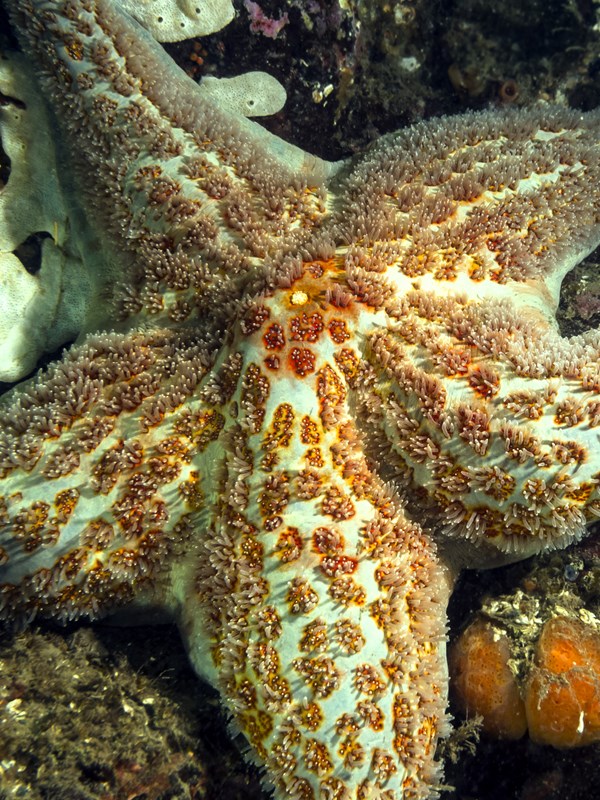
Leather Star
Scientific Name Dermasterias imbricata
Native To Northern Pacific coast (from Alaska to Mexico)
Habitat Littoral zone of the coast to a depth of 100 m (328 ft)
Diet Algae, sea urchins, sponges, sea cucumbers, asteroids, bryozoans, hydroids and sea pens
Size and Age Up to 25 cm (10 in) in diameter
Natural History
Leather stars are a pacific invertebrate dwelling in waters that are typically cold. They are named after the leathery-like texture of their body. These sea stars have a reticulated body pattern that they use to camouflage. Despite being a predator of other ocean invertebrates, leather stars make up about 50% of the diet of morning sun stars, a 10-12 armed sea star with a voracious appetite. Though leather sea stars can make a getaway of about 15 cm per minute, this is not fast enough and they are often overtaken by the morning sun star. They are also preyed upon by sea gulls and otters. If they are not completely consumed by a predator, they can regenerate their bodies.
Least Concern

Conservation Status
Many ocean invertebrates require delicate and balanced conditions to survive. For this reason they are known as indicator species—when ocean conditions change, they are the first to be effected. Rising ocean temperatures, and ocean acidification, are currently major factors altering the health of our oceans. Leather stars are early indicators of these changes.
Interesting Facts
- Leather stars use a gill-like structure on their backs to breathe.
- Leather stars have a distinctive smell which resembles garlic and sulphur.
- Each arm on the leather star has a light sensing organ that is used to navigate its rocky environment and find prey.
- Leather stars are smooth, velvety and covered in a reddish-brown pattern.
- It can reproduce asexually, and regenerate, if split in two.

